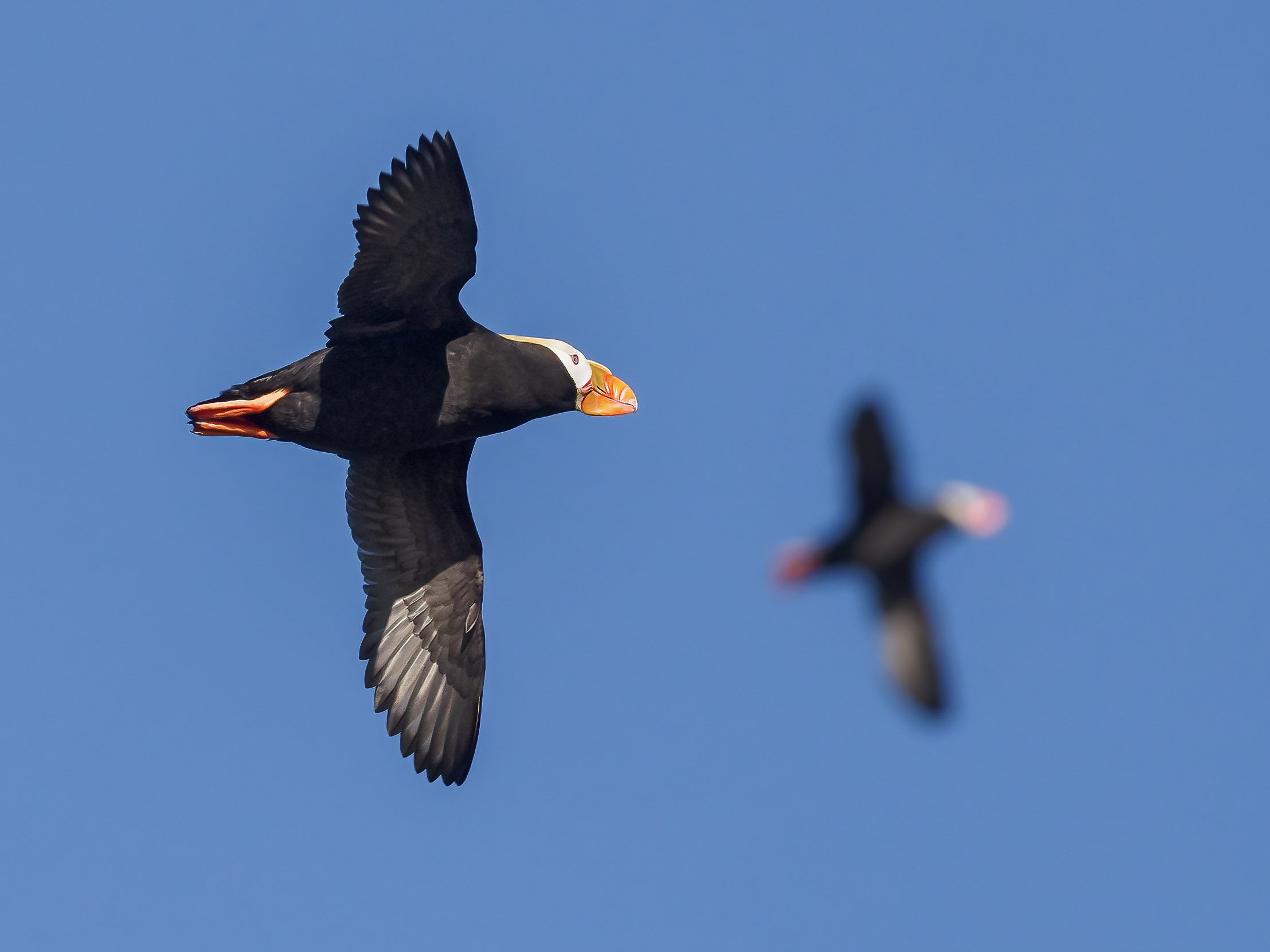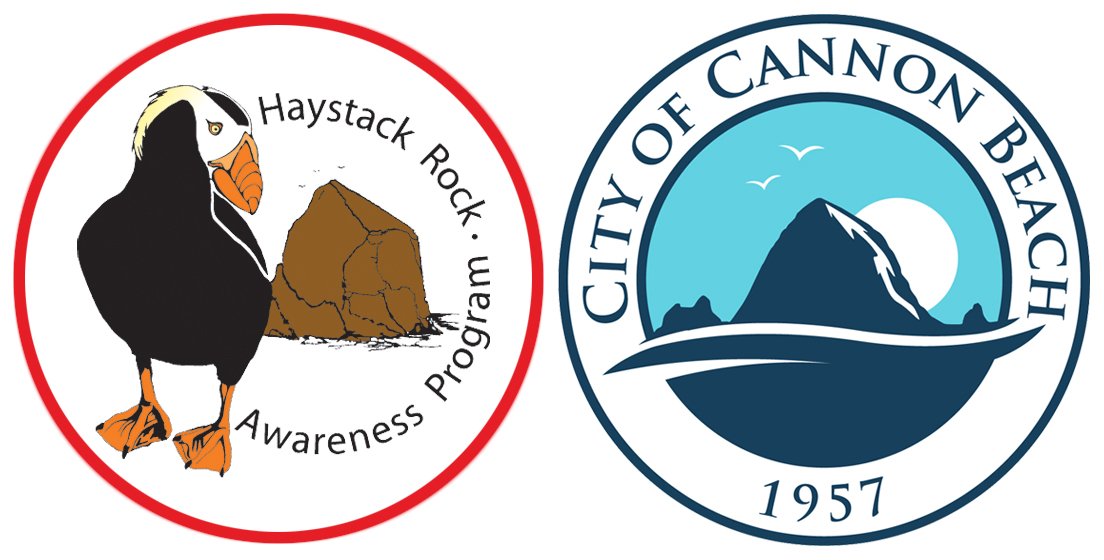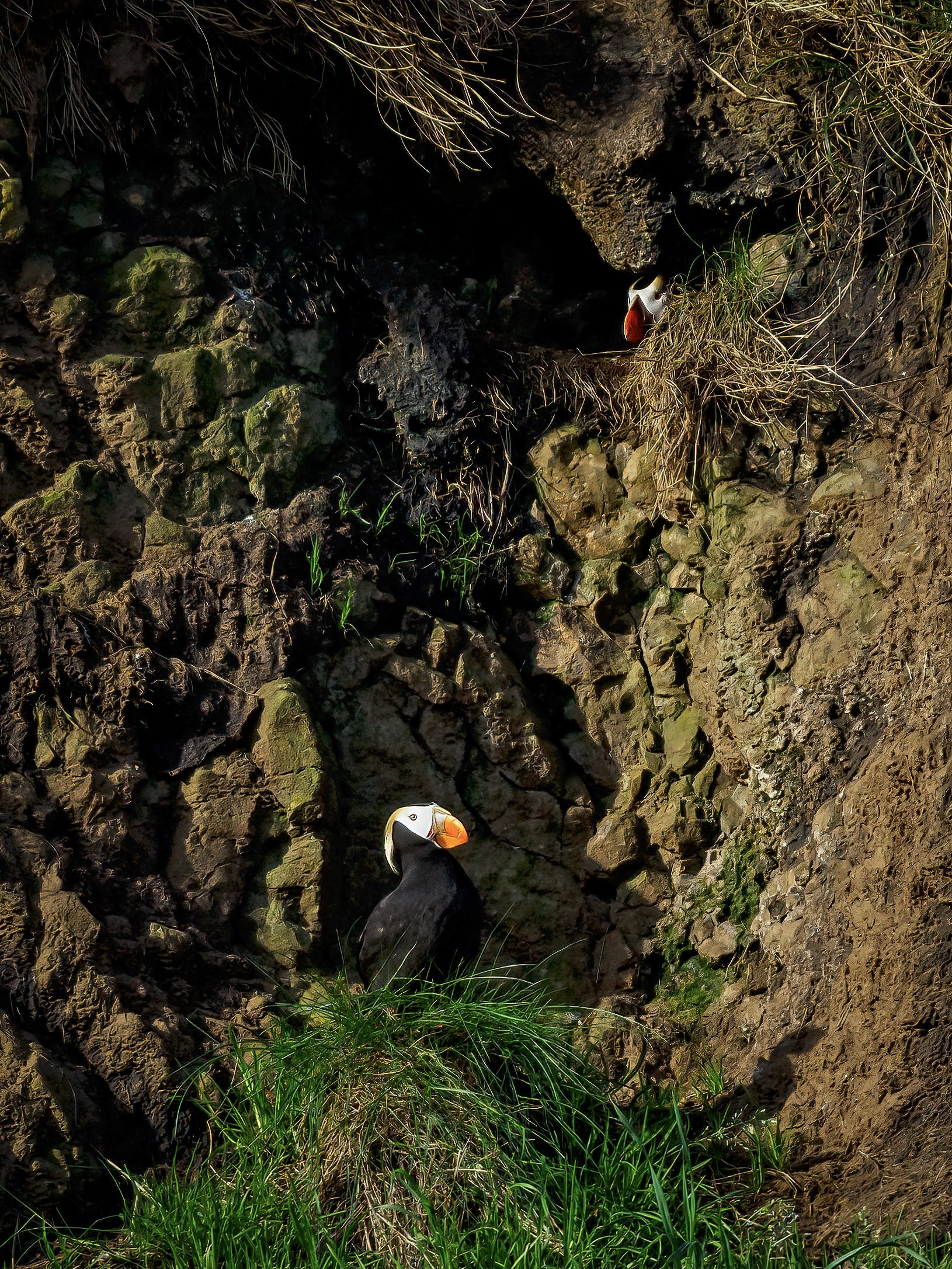
It’s a Puffin party.
Haystack Rock is home to the second largest on-shore Tufted Puffin population in the Continental United States.
The Tufted Puffin circus - yes, they are known as a “circus” - spend summers at Haystack Rock, where they breed and raise their young in burrows atop the rock. They are generally found between the months of April-August, after which they leave for winters on the open ocean. As pelagic seabirds, Tufted Puffins spend their non-breeding time in the open water of the northern latitudes of the Pacific Ocean.
When they’re here, the best time to spot Puffins tends to be from about 8-11 AM, as they are most active in the mornings, often fishing to feed their young.
Puffins in their burrows atop Haystack Rock. Credit: keithwallachphotography.com
While you may be able to glimpse at Puffins in the distance with the naked eye (they flap their wings quite frantically), the best way to see them is with binoculars or a scope. When clear mornings overlap with low tides, we will often provide scopes for visitors to use and a staffer to point you in the right direction. If you’re trying to find them by yourself, look towards the grassy patch on the northeast side of Haystack Rock.
Hardy little creatures, where Puffins spend their winters is not exactly known. Tracking studies are underway (though they’ve been known to gnaw off and remove tags in the past).
We do know that Puffins mate for life. They raise one puffling each year, and when that puffling is ready to fledge they leave the burrow under cover of darkness, to avoid predators like Bald Eagles (who are seen regularly around Haystack Rock). Puffins co-parent, each taking turns to fish. Their beaks are serrated, allowing them to pack some 20-to-30 small fish in a single trip. They’re also phenomenal divers and swimmers, able to rocket deep into the water.
We also know that Tufted Puffins are a species in peril.
The Puffin population at Haystack Rock has dropped a staggering 80% since 1980, from an estimated 600 to approximately 102. This is a slight decrease from the 2023 count of approximately 106. (Stephensen, S.W. 2023. Tufted Puffin monitoring study at Haystack Rock, Cannon Beach, Oregon 2010-2023. U.S. Fish and Wildlife Service Unpublished Report, Oregon Coast National Wildlife Refuge Complex, Newport, Oregon 97365. 33 pp.)
The causes are many, including: fisheries bycatch, forage fish population crashes, oil spills, competition from introduced species, habitat loss, and increased Bald Eagle predation.
While this decline is worrying, it also strengthens our resolve: that Haystack Rock - and the environment at large - is worth protecting. And if you want to get involved, there are plenty of local and regional organizations that could use your help! We are always accepting volunteers and encourage volunteering and supporting Friends of Haystack Rock, US Fisheries and Wildlife Services, Wildlife Center of the North Coast, Portland Audubon, and Friends of Cape Falcon. See here for more details from our partners. To learn more about Tufted Puffins, check out their species profile!


